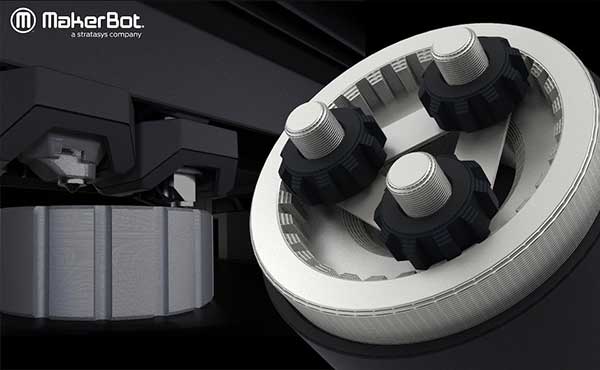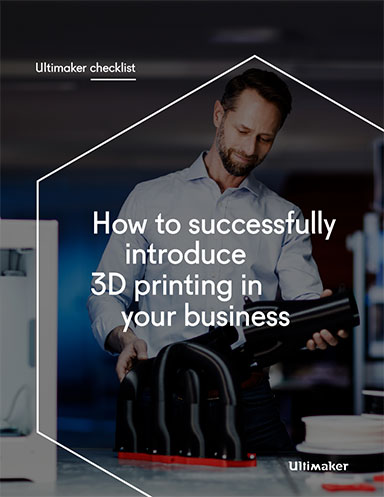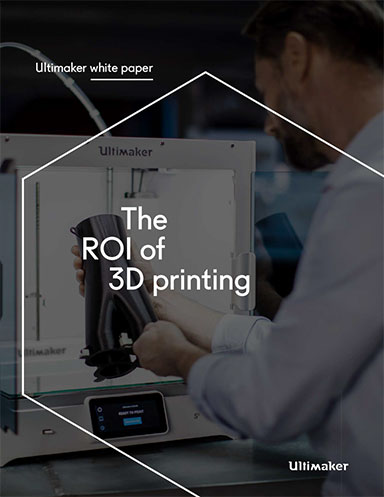Makerbot Method 3D Printers Support BASF Forward AM Composite Material
Users can explore printing rigid 316L stainless steel parts for industrial applications alongside advanced engineering polymers and composites on METHOD with the MakerBot LABS Experimental Extruder.

With an open materials platform and a portfolio of advanced engineering-grade materials, METHOD is an industrial desktop 3D printer with a heated chamber that can print polymer, composite and metal materials. Image courtesy of MakerBot.
Latest News
February 22, 2021
MakerBot, a Stratasys company, reports that the BASF Ultrafuse 316L Stainless Steel material by Forward AM has been qualified for the MakerBot LABS Experimental Extruder for the MakerBot METHOD 3D printers. With an open materials platform and a portfolio of advanced engineering-grade materials, METHOD is an industrial desktop 3D printer with a heated chamber that can print polymer, composite and metal materials.
Ultrafuse 316L Stainless Steel material combines strength, rigidity and durability needed for applications including functional prototypes and manufacturing tools. Available using the MakerBot LABS GEN 2 Experimental Extruder, this metal-polymer composite material provides METHOD users with an option to experiment with metal 3D printing applications. METHOD’s heated chamber and ability to control the speed at which a part cools down during the printing process can also help reduce the risk of delamination.
Once the part is printed with BASF Forward AM Ultrafuse 316L, it can then be sent out to post-processing or specialized manufacturing facilities for debinding and sintering, which turns the part printed with the composite material into solid stainless steel. This process allows users to create stainless steel parts without investing in debinding and sintering equipment. Final parts can achieve up to 96% of the density of pure 316L metal material. Users can produce lightweight, hollow metal parts with tensile strength.

“Ultrafuse Metal Filaments removed the barriers between metal 3D printing and users to make the technology more accessible to a larger audience. We aim to add our recently launched Ultrafuse 17-4 PH filament, with the Ultrafuse 316L to make our entire portfolio accessible to MakerBot users,” says Firat Hizal, head of Metal Systems Group, BASF 3D Printing Solutions.
“Our customers have expressed interest in exploring metal 3D printing but have been deterred by the high costs and extensive processes of traditional metal 3D printing solutions. By supporting a metal filament as part of the MakerBot LABS program, customers now have an easier and more affordable way to experiment with 3D printing metal before investing in a full printing, debinding and sintering solution,” says Johan-Till Broer, vice president of Product Development, MakerBot.
Ultrafuse 316L material properties make it useful for various manufacturing tools, jigs and fixtures, and end-use parts, such as workholdings that need to withstand high temperatures; brackets that require high strength and custom designs for specialty machinery; or robotic grippers that need to be strong, lightweight and wear resistant.
Ultrafuse 316L and additional debinding and sintering options are available through authorized resellers.
The MakerBot LABS GEN 2 Experimental Extruder enables users to print with a list of third-party materials on METHOD, opening the possibilities of new and different applications. With the METHOD platform, users can print engineering-grade plastics and carbon fiber materials, while also exploring applications with experimental metal 3D printing solutions. METHOD’s modular platform lets users easily switch between six extruders that allow them to print different base and model materials. MakerBot is continuing to identify additional industrial 3D printing materials for the METHOD platform.
For more information, click here.
Sources: Press materials received from the company and additional information gleaned from the company’s website.
More MakerBot Coverage
Subscribe to our FREE magazine, FREE email newsletters or both!
Latest News
About the Author
DE’s editors contribute news and new product announcements to Digital Engineering.
Press releases may be sent to them via [email protected].






